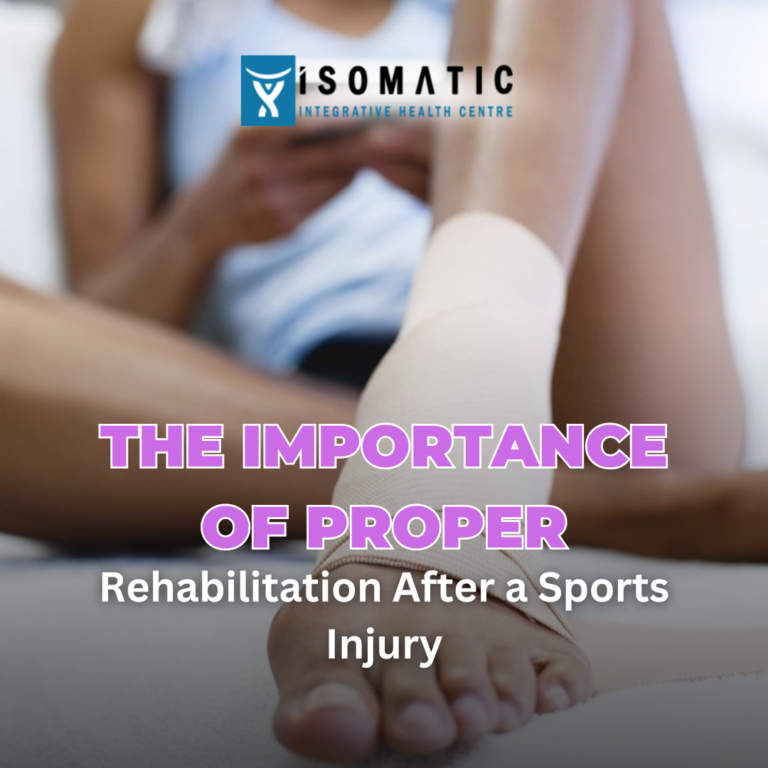Rehabilitation is not a detour—it’s part of the journey. Proper rehab protects your future in sports, strengthens your body, and builds resilience. Whether it’s a sprained ankle or a torn ligament, always prioritize smart recovery. Because healing right today means playing stronger tomorrow.
The Importance of Proper Rehabilitation After a Sports Injury

When a sports injury strikes, it can feel like your progress halts instantly. Whether you’re a dedicated athlete or a casual gym-goer, how you recover matters as much as how you train. That’s why the importance of proper rehabilitation after a sports injury cannot be overstated.
Why Proper Rehab Matters
Skipping rehab or rushing back into action often leads to setbacks. In fact, improper or incomplete rehabilitation is one of the leading causes of re-injury. But when done right, rehab helps:
Restore strength and mobility
Reduce pain and inflammation
Rebuild confidence
Enhance long-term joint and muscle health
Key Benefits of Proper Rehabilitation
Faster Recovery
With structured guidance, recovery becomes efficient. Targeted exercises help tissues heal faster and reduce the risk of scar tissue formation.
Prevents Further Injury
Rehab identifies underlying weaknesses or imbalances that caused the injury in the first place—ensuring they’re addressed before returning to sport.
Improves Athletic Performance
Believe it or not, good rehab can make you stronger than before. It often includes mobility work, core stability, and sport-specific drills.
Mental Wellness
Injuries affect your mindset. A consistent rehab routine restores not just your body—but your motivation, purpose, and discipline.
What Happens Without Proper Rehab?
Increased chances of re-injury
Chronic pain or stiffness
Reduced performance or range of motion
Long-term health complications like arthritis
What Does a Proper Rehab Plan Include?
Phase 1: Rest & Pain Management
Using ice, compression, or even gentle movements to begin healing.Phase 2: Range of Motion Exercises
Reintroducing movement to prevent stiffness.Phase 3: Strength & Stability Work
Targeting weak areas to support injured joints or muscles.
Phase 4: Functional & Sport-Specific Training
Mimicking real movement patterns to prepare for safe return.
FAQs
Is osteopathy painful?
No, osteopathic techniques are generally gentle and tailored to your comfort level.
How many sessions do I need?
It varies. Some people feel better after just 1–2 sessions; others may need a longer course, especially for chronic issues.
What’s the difference between osteopathy and chiropractic care?
Osteopathy is broader in scope and often gentler. Chiropractors focus primarily on spinal adjustments, while osteopaths work on all joints, muscles, fascia, and organs.
Can osteopathy replace physiotherapy or medical treatment?
It’s not a replacement but a complementary approach. Many patients benefit most from combining osteopathy with other therapies.
Is osteopathy safe for pregnant women and children?
Yes, when provided by a qualified practitioner, osteopathy is safe for people of all ages.
Will insurance cover osteopathy?
Many plans do, but it’s best to verify with your provider.
Conclusion
Discover how we can help you today. Contact us to book your first appointment.
Related Posts

Chronic Back Pain: Why Massage Alone Isn’t Enough
October 7, 2025
Chronic Back Pain: Why Massage Alone Isn’t Enough Back pain is one of the most common modern ailments—affecting nearly everyone at some point in life.

How to Speed Up Recovery From a Rotator Cuff Injury
September 30, 2025
How to Speed Up Recovery From a Rotator Cuff Injury Rotator cuff injuries are frustrating. They can limit your ability to lift, reach, or even

Can Osteopathy Improve Your Sleep? The Surprising Answer
September 23, 2025
Can Osteopathy Improve Your Sleep? The Surprising Answer Tossing and turning at night can feel like a never-ending battle. If you’ve tried everything—herbal teas, meditation
